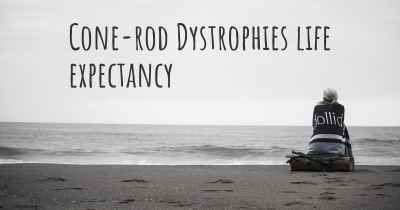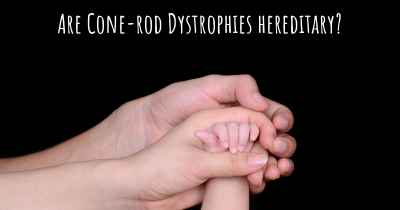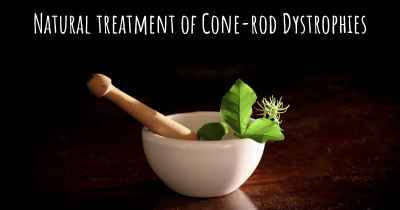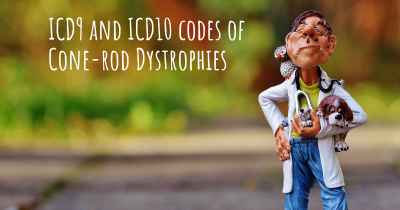How to live with Cone-rod Dystrophies? Can you be happy living with Cone-rod Dystrophies? What do you have to do to be happy with Cone-rod Dystrophies?
Living with Cone-rod Dystrophies can be difficult, but you have to fight to try to be happy. Have a look at things that other people have done to be happy with Cone-rod Dystrophies
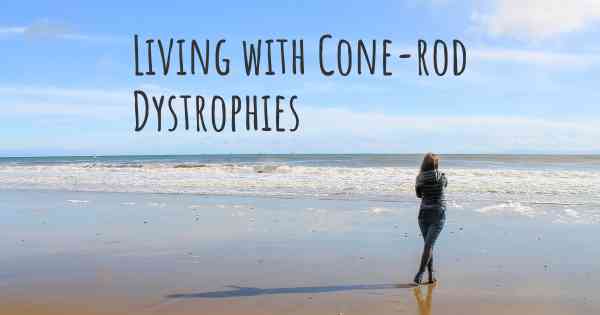
Living with Cone-rod Dystrophies: Finding Happiness and Fulfillment
Living with Cone-rod Dystrophies (CRDs) can present unique challenges, but it is possible to find happiness and fulfillment despite the condition. CRDs are a group of inherited eye disorders that primarily affect the cone and rod cells in the retina, leading to vision loss and other visual impairments. While the journey may be difficult at times, there are several strategies and approaches that can help individuals with CRDs lead a fulfilling life.
1. Seek Support and Education
One of the most crucial steps in living with CRDs is to seek support and education. Connect with organizations, support groups, and online communities that specialize in visual impairments and CRDs. These resources can provide valuable information, emotional support, and a sense of belonging. Additionally, consider attending workshops or conferences to learn about the latest advancements in CRD research and treatment options.
2. Build a Supportive Network
Surrounding yourself with a supportive network of family, friends, and healthcare professionals is essential. Share your experiences, challenges, and aspirations with them. Open communication and understanding can help alleviate feelings of isolation and provide a strong support system to lean on during difficult times.
3. Embrace Assistive Technology
Assistive technology can significantly enhance the quality of life for individuals with CRDs. Explore various devices and tools designed to assist with daily activities, such as magnifiers, screen readers, and voice-activated assistants. These technologies can help maintain independence and enable individuals to continue pursuing their passions and interests.
4. Adapt and Modify Your Environment
Modifying your environment to suit your needs can greatly improve your daily life. Ensure your living space is well-lit and free of obstacles. Use contrasting colors to enhance visibility and consider labeling items for easy identification. Implementing these modifications can help you navigate your surroundings more confidently and reduce the risk of accidents.
5. Prioritize Self-Care
Self-care is crucial for overall well-being, especially when living with CRDs. Take time to engage in activities that bring you joy and relaxation. This could include hobbies, exercise, meditation, or spending time in nature. Prioritizing self-care allows you to recharge, reduce stress, and maintain a positive mindset.
6. Focus on Abilities and Accomplishments
While CRDs may present challenges, it is important to focus on your abilities and accomplishments rather than solely on limitations. Celebrate your achievements, both big and small, and recognize the unique strengths you possess. Cultivating a positive mindset and embracing a growth mindset can help you overcome obstacles and find happiness in your journey.
7. Seek Professional Guidance
Consulting with healthcare professionals who specialize in CRDs can provide valuable guidance and support. Ophthalmologists, low vision specialists, and occupational therapists can offer personalized strategies to maximize your remaining vision and adapt to visual changes. They can also provide recommendations for visual aids and rehabilitation programs tailored to your specific needs.
8. Engage in Advocacy
Becoming an advocate for yourself and others with CRDs can be empowering and fulfilling. Raise awareness about CRDs by sharing your story, participating in fundraising events, or supporting research initiatives. By advocating for improved accessibility and understanding, you can make a positive impact on the lives of others facing similar challenges.
9. Cultivate a Supportive Mindset
Developing a supportive mindset is crucial in finding happiness while living with CRDs. Accept that it is normal to experience a range of emotions, including frustration and sadness, but strive to focus on the positive aspects of your life. Surround yourself with positivity, practice gratitude, and engage in activities that bring you joy.
10. Seek Professional Counseling
Living with CRDs can be emotionally challenging, and seeking professional counseling or therapy can provide additional support. A trained therapist can help you navigate the emotional impact of CRDs, develop coping strategies, and provide a safe space to express your feelings.
Remember, living with CRDs does not define your happiness or limit your potential. By embracing support, adapting your environment, prioritizing self-care, and maintaining a positive mindset, you can lead a fulfilling and joyful life despite the challenges posed by Cone-rod Dystrophies.
